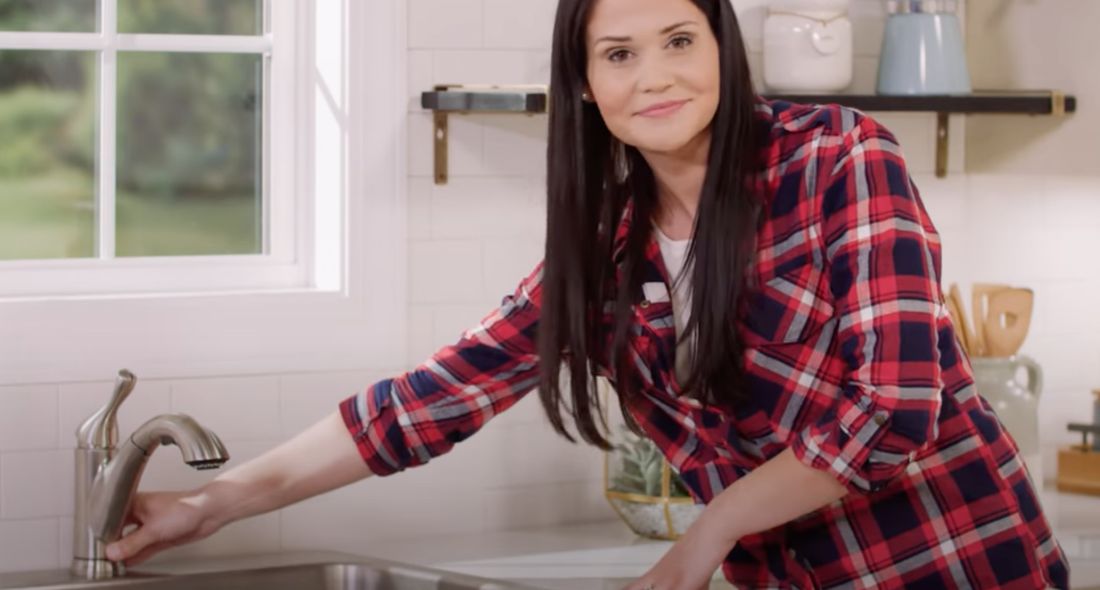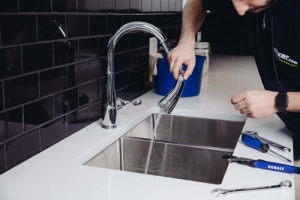What It's Essential to Deal with a Faulty Faucet
Call TodayDo you find yourself trying to find facts and techniques on How to Fix a Dripping or Leaky Faucet ?

Trickling taps could look like a small hassle, yet their impact exceeds just the aggravation of the sound. From drainage to sustaining unnecessary monetary costs and health and wellness threats, neglecting a trickling tap can lead to various repercussions. In this short article, we'll look into why it's crucial to resolve this typical home concern immediately and effectively.
Waste of Water
Ecological Effect
Leaking taps contribute substantially to water waste. According to the Environmental Protection Agency (EPA), a single faucet dripping at one drip per secondly can waste greater than 3,000 gallons of water each year. This not only pressures water resources yet also influences communities and wildlife based on them.
Step-by-Step Guide to Repairing a Dripping Tap
Devices Needed
Before attempting to fix a trickling faucet, gather the needed tools, consisting of an adjustable wrench, screwdrivers, replacement components (such as washers or cartridges), and plumber's tape.
Typical Tap Issues and Their Solutions
Recognize the kind of faucet and the details issue causing the drip. Usual problems consist of worn-out washing machines, corroded shutoff seats, or malfunctioning O-rings. Describe producer directions or on-line tutorials for step-by-step support on repair work.
Financial Expenses
Raised Water Bills
Past the environmental impact, leaking taps can pump up water costs substantially. The collected wastefulness with time equates into higher utility costs, which can have been avoided with prompt fixings.
Prospective Building Damages
Moreover, prolonged dripping can bring about damage to fixtures and surfaces bordering the faucet. Water build-up can create discoloration, rust, and even structural problems if left ignored, causing added fixing costs.
Wellness Issues
Mold And Mildew and Mold Development
The consistent existence of dampness from a dripping tap develops an ideal environment for mold and mildew development. These fungi not only jeopardize indoor air high quality but likewise pose health dangers, especially for individuals with respiratory system problems or allergies.
Waterborne Diseases
Stagnant water in dripping taps can end up being a breeding ground for bacteria and other pathogens, raising the risk of waterborne conditions. Impurities such as Legionella microorganisms grow in stagnant water, potentially bring about significant health problems when ingested or inhaled.
Do it yourself vs. Professional Repair service
Pros and Cons of Do It Yourself Repair
While some might attempt to fix a dripping tap themselves, DIY repair work include their very own set of obstacles. Without proper expertise and tools, DIY efforts can exacerbate the concern or bring about incomplete repair work, extending the trouble.
Advantages of Hiring a Professional Plumber
Employing a professional plumber makes certain that the underlying cause of the dripping faucet is addressed properly. Plumbing technicians have the expertise and tools to diagnose and repair tap concerns successfully, saving time and reducing the risk of more damage.
Ecological Duty
Specific Payment to Preservation
Taking obligation for taking care of leaking faucets lines up with more comprehensive efforts toward water conservation and environmental sustainability. Every individual's activities jointly make a substantial impact on protecting valuable resources.
Lasting Living Practices
By focusing on punctual repairs and adopting water-saving routines, people contribute to sustainable living practices that benefit both present and future generations.
Preventive Measures
Regular Maintenance Tips
To prevent dripping faucets, perform routine upkeep such as cleansing aerators, checking for leakages, and replacing worn-out parts promptly. In addition, take into consideration installing water-saving gadgets or upgrading to much more efficient components.
Relevance of Prompt Services
Attending to leaking faucets as quickly as they're observed stops additional water waste and prospective damages, eventually saving both water and money in the long run.
Impact on Building Value
Assumption of Well-Maintained Property
Keeping a residential property in good condition, including addressing upkeep issues like trickling taps, enhances its perceived worth and charm among prospective buyers or lessees.
Influence on Resale Worth
Features with well-kept plumbing fixtures, consisting of faucets, command greater resale worths in the property market. Addressing leaking faucets can add to a favorable perception during building assessments and negotiations.
Verdict
Dealing with a trickling faucet surpasses mere ease; it's an important step towards saving water, decreasing economic expenses, and securing health and residential property. Whether through DIY repairs or expert support, doing something about it to deal with trickling taps is a little yet impactful method to promote accountable stewardship of resources and contribute to a healthier, extra lasting future.
How to Fix a Leaky Faucet: Step-by-Step Repair Guide
A leaky faucet may seem like a simple annoyance, but if it's not fixed promptly, that leak could cost hundreds to potentially thousands. From water damage to mold, mildew, and high water bills, even a tiny leak can be catastrophic if left unattended. Damage like this can even affect the overall value of your home, so it's important to take the right approach for leaky faucet repair. You may need the help of a plumber in some cases, but we've got a few tips you can try on how to fix a leaky faucet before calling the pros.
Four Faucet Types
When you're learning how to fix a leaky faucet, the first step is knowing what kind of faucet you're working with! There are four common types.
Cartridge Faucets
Cartridge faucets come in one- or two-handled varieties. In one-handled cartridge faucets, hot and cold water combines in a single cartridge. In the two-handled versions, hot and cold water are controlled separately and mixed in the faucet.
Ball Faucets
Ball faucets have a single lever you push up and down to adjust the pressure and rotate to change the temperature. A slotted metal ball controls the amount of water allowed into the spout.
Compression Washer Faucets
They're the oldest type of faucet, but they're still used in many homes — especially older ones. Compression faucets have two separate handles that, when turned, raise or lower the washer that seals a water valve. This valve stops water from flowing through the faucet when it is turned off.
Disc Faucets
Disc faucets rarely need to be repaired due to their maintenance-free design. The water flow is controlled by two discs — the upper one raises and lowers against a fixed lower disc, creating a watertight seal. If your disc faucet starts leaking, you may need to replace the seals or clean residue buildup from the inlets.
Fixing a Leaky Faucet
Step 1: Turn Off the Water
Whether you're learning how to fix a leaky bathtub faucet or how to fix a leaky kitchen faucet, always turn off the water supply to your working area when you're fixing a leak. The last thing you want is a flood added to your list of things to fix.
Look for the shutoff valves below your sink or around the tub and turn them clockwise to stop the water flow. If your faucet doesn't have shutoff valves, you may need to turn off the water for the whole house. Check to make sure it's off by turning the faucet on. If nothing comes out, you're ready to start the repair.
Step 2: Take Apart the Faucet
How you disassemble your faucet depends on the type of fixture you have. You can use a flathead screwdriver to remove the caps on top of the handle or handles for cartridge and compression faucets. Inside, you should see handle screws. Unscrew these with a screwdriver to remove the handle.
Disc- and ball-style faucets will typically have an inlet screw near the handle, and removing that will reveal the interior of the faucet.
Detach the Valve Stem
For cartridge- and compression-style faucets, you'll see the inner valve stem or cartridge once you remove the faucet handles. If you have a compression faucet, unscrew the brass valve stem. If you have a cartridge faucet, pull out the cartridge. If your cartridge has been in place for a while, it may require some tools or extra force to remove it due to mineral deposits.
Examine and Replace Parts
Once you've removed the parts, check them out to confirm what needs to be replaced. You may see corroded rubber washers, O-rings, stems, or cartridges. On a ball-style faucet, check the seats and springs for damage.
If you need to repair a leaky disc faucet, check the inlet and seals on the lower disc.
Once you determine what parts must be replaced, visit your local hardware store. Bring the damaged parts with you to ensure you can purchase the correct components to replace them.
Clean Valves and Faucet Cavity
If you've removed a stem or cartridge, you may notice mineral buildup in the faucet's threads. Use white vinegar to clean the valve seat by soaking it for a few minutes, then scrub it away with a soft toothbrush and rinse with warm water. You can also clean the interior of the faucet in the same way.
Reassemble the Faucet
Once your faucet is cleaned and the required parts have been replaced, it's time to reassemble it. Put the pieces back together and slowly turn the water supply back on. Doing this slowly is crucial because too much initial water pressure can damage the new hardware you've just installed.
https://homewarranty.firstam.com/blog/how-to-fix-leaky-faucet

We had been introduced to that report about Water Dripping from Faucet: Why and How to Fix from a pal on a different blog. Are you aware of another individual who is serious about the niche? Please feel free to promote it. Thanks a lot for your time spent reading it.